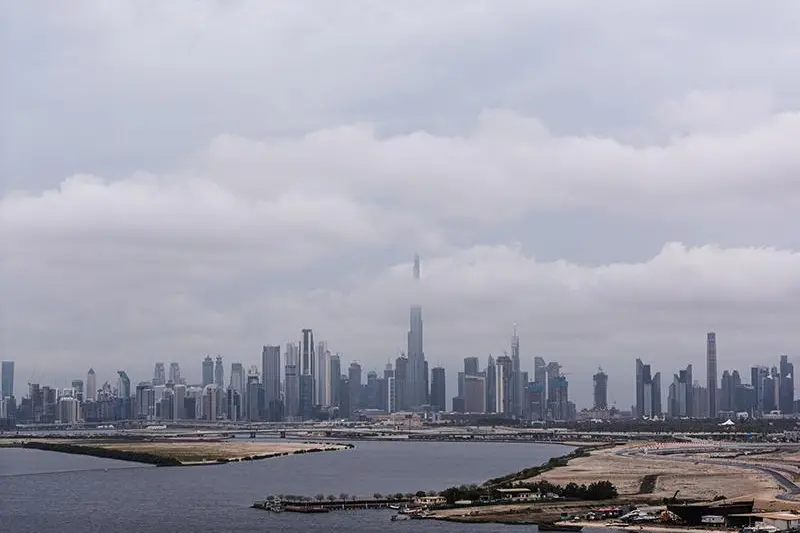PHOTO
Compared to previous years, the UAE witnessed less rainfall than usual in December 2023, leading to a milder winter. However, with the resumption of cloud-seeding operations in 2024, we're crossing our fingers for a weather makeover.
Cloud seeding in UAE produces a minimum of 15 per cent additional rainfall each year, yielding between 84 and 419 million cubic metres of usable water from these seeding operations.
Dr Ahmed Habib, a climate expert from the National Centre of Meteorology (NCM), shed light on the ongoing cloud-seeding endeavours in the UAE by outlining the specific areas where these rain enhancement operations have been conducted this year.
He said, “Both Monday and Tuesday witnessed cloud cover in the northern region of the country accompanied by sporadic light rain. Consequently, we conducted a cloud-seeding operation in the northern areas of the UAE, specifically over Hatta, certain regions north of Al Ain, and parts of Fujairah.”
Dryer and warmer winter
Talking about the lower amount of rainfall December received in 2023, he said, "The country experienced rainfall but not heavy rains unlike the previous years. In December, the average rainfall has been lower. This is due to the system pressure affecting both the surface and upper layers across the UAE.”
In the previous years, between November and January, the country received higher levels of rainfall, even leading to unstable weather conditions in 2022 during this time frame.
Habib said, “This year has seen a slight increase in warmth overall, with temperatures surpassing the usual averages. However, certain areas have not followed this pattern, experiencing relatively cooler conditions as well.”
In 2023, the possibility of rainfall seemed promising in Saudi Arabia and its nearby areas. But he pointed out that due to prolonged high pressure in the country, the dispersion of rain-bearing clouds across the region has been hindered.
Water security
Cloud seeding has been an innovative solution for the UAE in addressing water scarcity issues.
Launched by the Ministry of Presidential Affairs of the UAE, it is managed by the National Centre of Meteorology (NCM), the UAE Research Programme for Rain Enhancement Science, to stimulate rain enhancement research and improve water security.
By introducing certain elements to the clouds, cloud seeding artificially enhances precipitation, which has increased water resources for domestic and industrial use and agriculture.
The nation, on average, conducts over 900 hours of cloud-seeding missions every year. It is a highly organized practice managed by meteorologists and experts at the National Centre of Meteorology (NCM).
The process involves detailed stages such as weather analysis, planning, execution, and monitoring.
Alya Al Mazroui, Director of the UAEREP, said in an earlier interview, “The remarkable technological and scientific advancements achieved by UAEREP continue to gain global recognition due to their significant potential for wider applications in countries facing similar water scarcity challenges.”
During cloud seeding, dedicated aircraft equipped with flares containing nucleating agents go up into the sky. These agents, once released into convective clouds, stimulate the growth of cloud droplets, causing them to increase in size until they reach a critical point and precipitate as rain.
“These advancements have not only positioned the UAE at the forefront of rain enhancement research but have also inspired global interest in rain enhancement research as a viable and sustainable alternative to our conventional fresh-water sources,” Mazroui added.
Copyright © 2022 Khaleej Times. All Rights Reserved. Provided by SyndiGate Media Inc. (Syndigate.info).





















